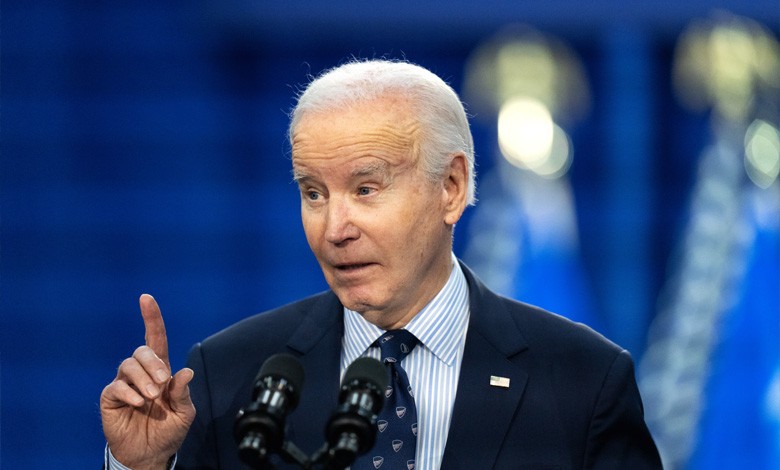The new US defense doctrine: Europe will not be left alone with the Russian threat

We are entering a particularly dangerous period for the future of humanity. However, there is good news: the new US defense doctrine assumes that the United States is not abandoning Europe in favor of Asia and leaving us to Putin’s discretion. A leading Polish publication writes about it “Republic”, responding to the release of details of a document signed by President Joe Biden in March, but only now revealed through a publication in The New York Times.
The publication emphasizes that from now on the threats from Russia and China are considered as inseparable. The possibility of a simultaneous nuclear attack by Russia, China and North Korea is assumed. This means a complete change in the way Americans think about security.
For European countries, the most important thing is that the United States no longer perceives the threat from Beijing and Moscow separately.
As you know, in 2011 Barack Obama announced a “reversal” of American foreign policy, focusing US attention on Asia and recognizing the growing threat from China. This decision caused concern in Poland and other countries of the European Union. There was a fear that Washington could reduce its attention to the issues of the Old Continent, in particular, this concerned the confrontation with Russia. The war in Ukraine, which began in 2014, has only heightened these anxieties, raising questions about how long the US will remain involved in supporting Kyiv.
Now, in the perception of the United States, Russia and China are one whole.
The Pentagon must have decided that the cooperation between Moscow and Beijing is so close that they form one block of corrupt dictatorships whose main goal is to get rid of the dominance of the liberal West in the world. In this context, Putin’s hypothetical conquests in Europe may also serve to strengthen China. Therefore, the Americans cannot allow them.
From the Kissinger maneuver to the new nuclear era
It is noteworthy that the document nullifies what is usually called the Kissinger maneuver. It is about breaking the alliance between the Soviet Union and the People’s Republic of China, which was cemented by Richard Nixon’s visit to Beijing in 1972. Since then, America has increased economic cooperation with China, hoping that this will deter the Chinese from returning to the alliance with Russia. Now it is already in the past.
We are also witnessing another great change. In 1972, Nixon signed the SALT I nuclear disarmament agreement with Leonid Brezhnev, which was intended to reduce the risk of a nuclear disaster. It will be recalled that the agreement limited the number of deployed intercontinental ballistic missiles (ICBMs) and submarine-launched ballistic missiles (SLBMs), and also set limits on the number of launchers for these missiles. In addition, the agreement established a moratorium on the deployment of new air defense systems that could threaten strategic missile forces.
Now, 52 years later, that era is coming to an end as China and Russia, under Putin, are reluctant to enter into similar deals. The Americans believe that within the next decade, China can achieve the same level of nuclear power as Russia and the United States. This means that we are entering an extremely dangerous period for the future of humanity.
Loss of strategic advantage: Putin becomes dependent on China
Putin may eventually find himself a vassal of Xi Jinping, losing even his previous advantage in nuclear weapons. American intelligence indicates that this advantage, which until now has been one of Putin’s last arguments in relations with the Chinese leader, is quickly disappearing.
In light of this situation, Russia, which is stuck in a war with Ukraine and has an economy nine times smaller than China’s, is becoming even more dependent on China. The emergence of Russia as a dependent partner strengthens China’s position in international politics and economics, which changes the dynamics of global relations and reduces Moscow’s strategic weight.
Consequences of the failure of Trump’s diplomacy
Finally, the inclusion of North Korea in the US strategy is a clear manifestation of the defeat of Donald Trump, who tried to personally convince North Korean leader Kim Jong-un to give up his nuclear program through face-to-face meetings. It was part of his “maximum pressure” strategy and diplomatic efforts to denuclearize North Korea. North Korea now appears to have at least 60 nuclear warheads, a significant number that puts it on par with other nations such as Israel and Pakistan. North Korea is now seen as a serious nuclear threat that can act without fear of significant consequences.
Rethinking global security
The new US defense doctrine focuses on adapting to a multipolar world where great power competition is at the fore. America is increasingly focused on countering the growing influence of China and Russia. The doctrine emphasizes the need to strengthen the military potential to deter these countries from aggressive actions, especially in regions such as the Indo-Pacific region and Eastern Europe.
The US offers effective “integrated deterrence” – a strategic approach that combines various components of defense policy to ensure effective deterrence of potential aggressors and prevent the escalation of conflicts. this concept involves a combination of conventional military forces, nuclear deterrence, cyber capability and alliances with other states.
The updated doctrine also provides for the modernization of the armed forces, including investments in advanced technologies such as artificial intelligence, hypersonic weapons and cyber security. This change also involves restructuring the force to be more flexible and capable of rapid deployment in a variety of environments.
NATO occupies an important place in the new US defense doctrine. The alliance is seen as a basis for collective defense and stability. The United States continues to support and facilitate investments in NATO infrastructure and the modernization of the alliance’s forces, which helps ensure its readiness for new challenges.
Recognizing the growing cyber threats and challenges posed by hybrid warfare, the doctrine places a strong emphasis on protecting the United States itself. This includes strengthening cyber security measures and preparing for possible disruptions to the functioning of critical infrastructure. The doctrine also emphasizes the importance of the Indo-Pacific region as a key theater of operations, reflecting concerns about China’s military buildup and its aggressive policies in the region. The US seeks to maintain a free and open Indo-Pacific region, resisting any attempts to undermine international norms.
In addition to state actors, the doctrine recognizes the importance of addressing challenges emanating from non-traditional actors such as terrorist groups and transnational criminal organizations. It also includes strategies to deal with new threats, such as climate change and pandemics, which can have a significant impact on security.
These elements are aimed at ensuring the ability of the United States to respond to a wide range of threats in an increasingly complex global environment. The doctrine is part of a broader shift in US military strategy aimed at maintaining global leadership and adapting to the changing nature of warfare.
Transition to a multipolar world
The new US defense doctrine, signed by President Joe Biden, indicates a major change in the American approach to global security. The document emphasizes that the US is not leaving Europe alone with the Russian threat, viewing the dangers from Russia and China as integral and interconnected. The doctrine departs from the traditional policy of isolating one threat from another, recognizing the new reality of a multipolar world. Important aspects are integrated deterrence, modernization of military forces, and the strengthening of NATO, which ensures readiness for new challenges, including a potential simultaneous nuclear attack by Russia, China, and North Korea. The doctrine also recognizes China’s role as a global adversary with significant influence on international politics and economics, especially in the context of Russia’s increasing dependence on Beijing.





